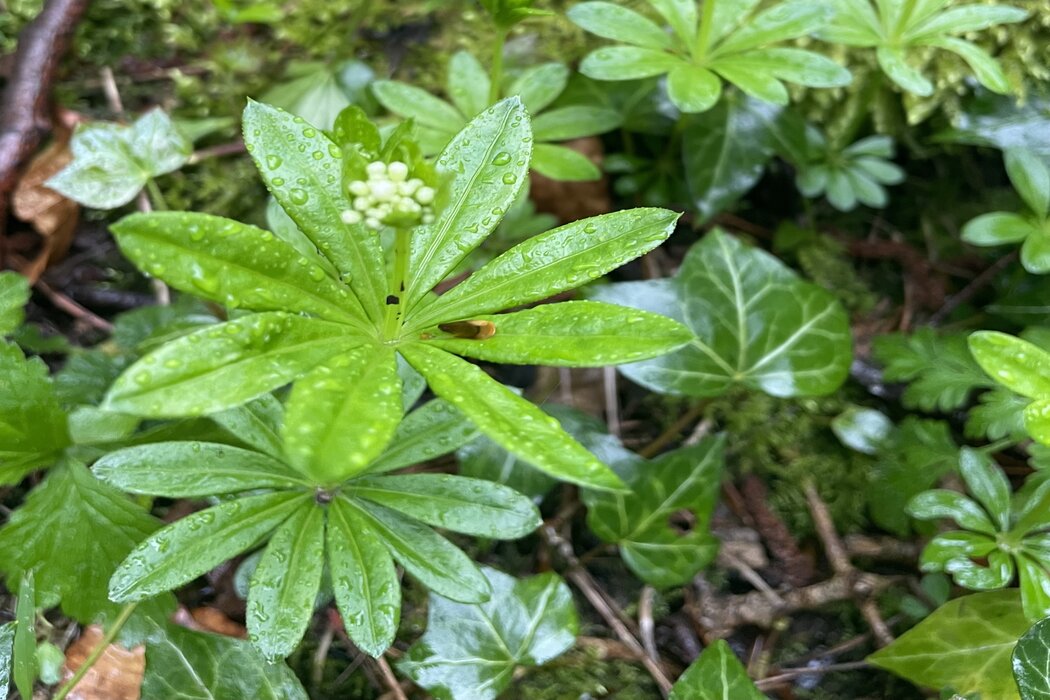Sweet Woodruff is one of our favourite botanicals, one we use in several of our spirits, including Wye Valley Gin and Silver Circle Aquavit. It's got a unique fragrant flavour that encapsulates everything we love about the landscape in this area.
Early May to mid-June is the right time to go foraging for Sweet Woodruff. It is easy to find once you know what to look for, but it needs specific conditions to be able to thrive. It typically grows in shady areas, such as woodlands and hedgerows. Its narrow stalk is famously square, a surefire way to identify the plant. The leaves are dark green, narrow and lance shaped with a slightly rough texture. Successive whorls of 6-8 leaves grow around the stalk like little stars.
When in season, in spring and early summer, sweet woodruff produces clusters of small, star-shaped white flowers that have a sweet, honey-like scent. In the Wye Valley, Sweet Woodruff can be found growing in abundance in the ancient woodlands and along the banks of the River Wye. The moist, shady conditions of this area are perfect for Sweet Woodruff to thrive, and its delicate beauty adds to the natural charm of the landscape.

Sweet Woodruff has a rich history of use across Europe and the UK. In the middle ages, Sweet Woodruff was widely used as a strewing herb, spread out on the floor or stuffed in mattresses to hide unpleasant odours and repel insects.
The plant's botanical name, Galium odoratum, comes from the Greek word gala, meaning milk, as Sweet Woodruff was traditionally used to curdle milk for cheese making. Odoratum, from Latin, refers to the plant's distinctive scent, reminiscent of freshly cut hay and marzipan, which is due to the presence of coumarin, an aromatic organic compound. Although the plant is named Sweet Woodruff, it is not highly fragrant when growing in the garden, as the coumarin fragrance is released when the plant is dried.

Sweet Woodruff also plays an important part in traditional folklore and superstition. In medieval times, it was believed that the herb had mystical properties and was used as a talisman to ward off evil spirits. In some cultures, it was also believed that Sweet Woodruff could ward off witches and protect against evil spells.
In Germany, Sweet Woodruff is called Waldmeister (Master of the Woods), and has traditionally been used to flavour May Wine, a sweet, aromatic wine made with white wine, sugar, and the herb. This drink is typically consumed on May Day, which is a big event in Germany. Germans also use it to flavour syrup, jelly, desserts, ice creams and sweets. In Berlin you can enjoy a Berliner Weiße with "Waldmeister Schuss", a sour beer with a shot of Sweet Woodruff added.

As with any plant, it's important to respect its natural habitats and populations, and to only harvest Sweet Woodruff sustainably. Follow foraging etiquette, and don’t take too much from one place. Always leave some for others and for further growth. By doing so, we can ensure that this fragrant and versatile herb remains a part of our culture and heritage for generations to come.

